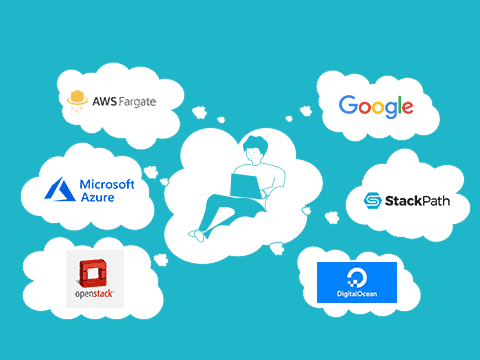
Many of the longer-established on-demand video services started life as ‘catch-up’ offerings, providing viewers with a means of watching programmes they missed when they were originally broadcast. However, as high-speed broadband and mobile connectivity have spread across most of the UK, on-demand is playing an increasingly important part in the way people watch their favourite shows.
The statistics underline this: research by eMarketer, for example, forecast that during 2020, 69.9% of the UK population would be watching digital video content at least once a month. And in the UK alone, Netflix has more than 13 million subscribers, Amazon Prime more than 7.8 million, and relative newcomer Disney+ 4.6 million.
The demand for excellence
High viewer expectations, coupled with an almost overwhelming choice of content providers, means any on-demand video service must provide a truly first-class experience, if it’s to attract and retain viewers and, by extension, advertisers.
Delivering this level of excellence requires the ability to innovate, and to do so quickly, cost-effectively and continually, leveraging new technologies as they become available, to provide ever-better offerings.
At the same time, from a technology standpoint, the service needs to be super-efficient. Idle infrastructure costs money – and the bigger the streaming service becomes, the more damaging any such inefficiency will be.
A unique set of challenges
Anyone seeking to deliver a first-rate video-on-demand service faces a blend of tech challenges that’s unique to the media industry.
Dealing with high data volumes is one issue, fuelled by growing viewer numbers and their thirst for ever-higher video quality.
Another is the fluctuation of demand throughout the day, week and year. Some of these peaks are relatively predictable, while others can be harder to foresee. This peaky traffic can be a particular issue for those whose video services are either solely or primarily consumed in one country or region.
The broadcast media landscape is also highly interconnected. This means video service providers don’t always get to set their own pace of innovation. For example, when a major television manufacturer announces a new model, on-demand video service providers may have to move very quickly to ensure their product is available on the TV when it launches.
The industry is becoming increasingly crowded, with players such as Disney+, Apple TV+ and Britbox entering the space to compete with established video providers for viewers’ eyes.
Lastly, it’s not uncommon for the longer-established broadcasters to be reliant on legacy hosting and technology contracts, which were put in place in an era before on-demand video represented such a significant part of the landscape. These agreements are typically expensive, and may not offer the levels of scalability and agility required by modern video-on-demand providers.
Leverage the cloud
Against this backdrop, smart video-on-demand companies need to embrace cloud technology that enables truly agile innovation, while minimising inefficiencies.
This means doing more than simply lifting-and-shifting existing monolithic systems to the cloud. Lift-and-shift will unlock some benefits, but will leave other blockers on innovation and cost-optimisation unaddressed.
The benefits of building truly cloud-native services
Instead, by building applications natively in the cloud, video service providers can remove many of these hurdles.
For example, they can leverage the extensive technical legwork that’s been done by cloud vendors. The big players offer a range of services that can form the foundations of a video-on-demand platform, including authentication systems, personalisation engines, video-processing capabilities and data analytics tools.
For video service providers, leveraging these existing offerings means more time and money can be spent developing the high-value capabilities that can genuinely improve and differentiate their own offerings, in viewers’ eyes.Secondly, building video-on-demand offerings that consist of multiple microservices, makes the overall capability cheaper and easier to extend, compared to a monolithic application. This makes the notion of truly agile innovation a reality, enabling video service providers to respond fast to viewer demands, competitor activity and the requirements driven by complementary players in the market, such as television and set-top-box manufacturers.
Thirdly, cloud-native applications help drive out cost inefficiencies in a number of ways. The aforementioned off-the-shelf services available from cloud vendors can often replace costlier legacy application components, which may have carried high licensing and support costs.
Serverless technologies mean applications can be architected to enable different parts to scale independently of one another, and to scale in different ways: some elements may need more CPU at peak times, while others require greater bandwidth. Applications built to fully leverage cloud technologies tend to enjoy this much more granular level of resource control, which helps businesses minimise inefficiencies.
And lastly, applications built using modern, widely understood cloud-native technologies are generally cheaper to maintain, since the skills are more readily available in the market.
Foundations for success
As people’s insatiable appetites for on-demand video grow unabated, media organisations must ensure their services continue delivering on viewer expectations. This demands exceptional service levels, the ability to get new products and features into customers’ hands quickly and painlessly, and, of course, the removal of any unnecessary cost. Building services natively in the cloud gives those in the media business the foundation they need to succeed in what’s a unique and complex landscape.


